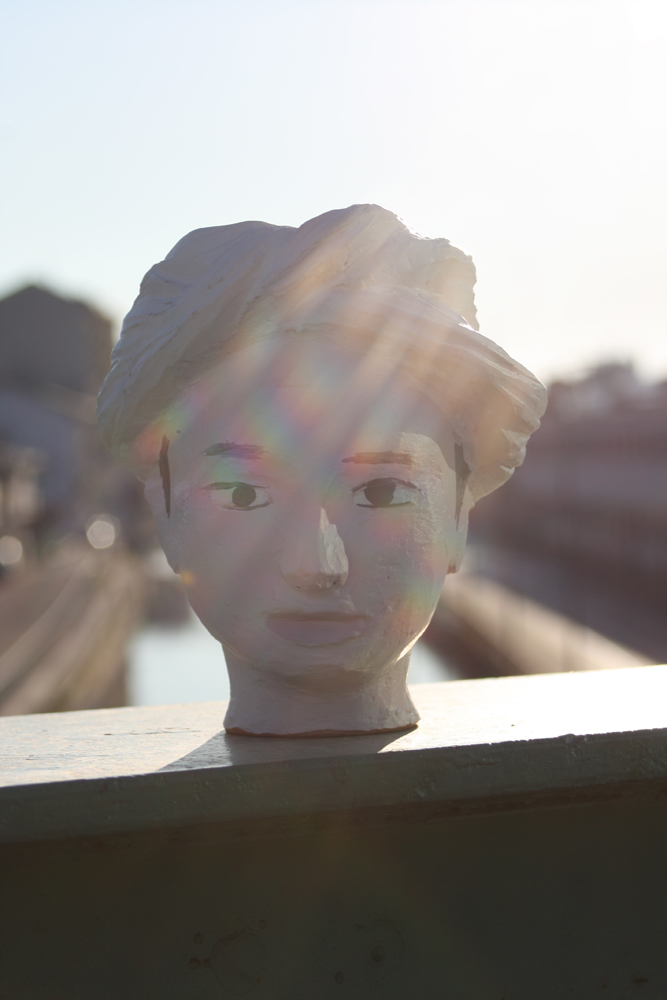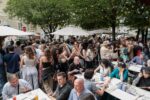Filippo La Vaccara – Un ritratto arbitrario

Come scrive la curatrice della mostra, Mercedes Auteri, le teste di La Vaccara ritraggono con rapidi tocchi dei tipi universali, l’essenza umana fatta di ricerca e spontaneità̀, magnificenza e sintesi plastica.
Comunicato stampa
Come scrive la curatrice della mostra, Mercedes Auteri, le teste di La Vaccara ritraggono con rapidi tocchi dei tipi universali, l'essenza umana fatta di ricerca e spontaneità̀, magnificenza e sintesi plastica. La tradizione italiana del ritratto, dai busti di epoca etrusca o romana alle teste novecentesche di Arturo Martini, passando per la ritrattistica rinascimentale di Francesco Laurana, é sempre stata in bilico tra verosimiglianza e idealizzazione, realismo e sogno.
L'installazione scultorea che viene presentata per la mostra milanese, curata dalla museologa e storica dell’arte Mercedes Auteri negli spazi di Manifiesto Blanco, è composta da una selezione di questi volti lavorati ad ingobbio, emotivamente spettacolari. Una serie a cui l'artista si dedica dal 2012 creando dall'argilla, biblicamente, presenze umane popolari e raffinate allo stesso tempo. I ritratti sono ispirati, arbitrariamente, alla vita reale, realizzati ad insaputa del modello, ricostruzioni alchemiche a distanza, configurazioni in creta dall'etere, dove il modello sarà̀ sempre più̀ presente mano a mano che il lavoro si sta completando. L'artista é artefice della rappresentazione di amici, amori, sconosciuti, animali, donne, uomini nell'arbitrario, e dunque sincero, ritratto del mondo.
L'individuo forma il collettivo, la moltitudine, la rappresentazione figurativa della vita stessa. Ogni volto, ogni sguardo, ogni piccola storia racconta una Storia più̀ grande che ci comprende tutti. Compatrioti, immigrati, diversi e familiari, di ogni età̀, razza e religione. Una piccola porzione di mondo che ci porta a confrontarci con l'alterità̀ e con le somiglianze, con il vicino e lontano da noi, con un gruppo di facce che ci rappresentano, come in uno specchio.
Filippo La Vaccara (Catania, 1972) si diploma in Scultura all'Accademia di Catania e inizia la carriera artistica nel 1998 con la personale a cura di Francesca Pasini in Viafarini a Milano. Nel 1999 è scelto da Angela Vettese e Giacinto di Pietrantonio per il Corso Superiore d’Arti Visive alla Fondazione Antonio Ratti di Como. Nel 2002 è Artist in Residence presso la Fondazione Orestiadi di Gibellina. Tra le altre mostre: Filippo La Vaccara (2000 e 2001) presso la Galleria Salvatore+Caroline Ala, Milano; La trama invisibile (2009) Galleria Claudia Gian Ferrari e Galleria The Flat – Massimo Carasi, Milano; Ritratto di L. R. (2010) per RISO Museo d’Arte Contemporanea della Sicilia (Palermo) e Fondazione Brodbeck (Catania); La Scultura Italiana del XXI secolo, Fondazione Pomodoro Milano (2011); La Vaccara / Maillet (2012) presso la Galleria Credito Valtellinese di Sondrio e Galleria Credito Siciliano di Acireale. Nel 2015 due sue opere, proprietà̀ della collezione di Mario e Bianca Bertolini, vengono acquisite dal Museo del 900 di Milano. É in corso di realizzazione un libro monografico sull'artista edito da Allemandi e prodotto dalla Pollock-Krasner Foundation, INC. di New York. Attualmente vive e lavora a Milano.
As written by the curator of the exhibition, Mercedes Auteri, La Vaccara's heads portray universal types with quick touches, the human essence made of research and spontaneity, magnificence and plastic synthesis. The Italian portrait tradition, from the busts of Etruscan or Roman times to Arturo Martini's twentieth century heads, through Francesco Laurana's Renaissance portraiture, has always been torn between verisimilitude and idealization, realism and dream.
The sculptural installation that is presented for the Milanese exhibition, curated by the art historian and museologist Mercedes Auteri at Manifiesto Blanco, consists of a selection of these engobe-slipped faces, emotionally spectacular. A series the artist has been working at since 2012 biblically creating popular, and refined at the same time, human presences from clay. The portraits are arbitrarily inspired to real life, based on oblivious models, remote alchemical reconstructions, in the ether clay configurations, where the model will be more and more present as they work is being completed. The artist is creator of the representation of friends, lovers, strangers, animals, women, men in the arbitrary, and therefore sincere portrait of the world.
The individual gives way to the collective, the multitude, the figurative representation of life itself. Every face, every look, every little story tells a larger story that includes us all. Compatriots, immigrants, different and familiar, of all ages, races and religions. A small portion of the world that confronts us with otherness and the similarities with the near and far from us, with a group of faces that represent us, as in a mirror.
Filippo La Vaccara (Catania, 1972) graduated in sculpture at the Accademia di Catania and began his artistic career in 1998 with a solo exhibit curated by Francesca Pasini at Viafarini in Milan. In 1999 he was chosen by Angela Vettese and Giacinto di Pietrantonio for the Advanced Course in Visual Arts at the Fondazione Antonio Ratti in Como. In 2002 he was Artist in Residence at the Orestiadi di Gibellina Foundation. Among other exhibitions: Filippo La Vaccara (2000 and 2001) at the Salvatore + Caroline Ala Gallery, Milan; La Trama Invisibile [The invisible web] (2009) Claudia Gian Ferrari Gallery and The Flat - Massimo Carasi Gallery, Milan; Ritratto di L.R. [Portrait of L.R.] (2010) for RICE Museum of Contemporary Art of Sicily (Palermo) and Brodbeck Foundation (Catania); La Scultura Italiana del XXI secolo [The Italian sculpture of the XXI Century], Pomodoro Foundation Milan (2011); La Vaccara / Maillet (2012) at the Credito Valtellinese of Sondrio Gallery and Credito Siciliano of Acireale Gallery. In 2015 two of his works, owned by Mario and Bianca Bertolini's collection, were acquired by the Museum of 900 in Milan. Coming soon: a monography on the artist published by Allemandi and produced by the Pollock-Krasner Foundation, INC., New York. He currently lives and works in Milan.



